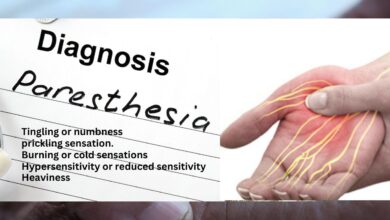
Back pain is something many of us have dealt with at some point in our lives. It’s one of those pesky issues that can sneak up on you when you least expect it. But what causes it, and more importantly, how can you manage it effectively? In this blog post, we’ll dig into the causes, symptoms, diagnosis, and treatment of back pain, while also offering some tips on prevention and management. Let’s get the ball rolling!
Table of Contents
Introduction
Back pain can range from a dull, annoying ache to a sudden, sharp pain. Whether it’s from an injury, a poor sleeping position, or just the wear and tear of daily life, it’s something that affects millions globally. You might be thinking, “Why does it hurt so much?” or “What can I do to prevent it?” Let’s dive into these questions.
Causes of Back Pain
The causes of back pain are as varied as the people who suffer from it. Sometimes, it’s the result of lifting something heavy or a sudden awkward movement that strains the muscles and ligaments. Other times, it’s due to more chronic conditions like arthritis or osteoporosis.
Another common cause is prolonged poor posture, especially in this digital age where we’re often hunched over computers and phones. It’s easy to forget about maintaining good posture until you feel that twinge in your back. Age is also a factor—let’s face it, our bodies aren’t getting any younger! Aging leads to a decrease in bone strength and muscle elasticity, making older adults more susceptible to back pain.
Moreover, lifestyle choices play a significant role. Sedentary lifestyles, characterized by long hours of sitting, can weaken the muscles that support the spine, making it more prone to pain. On the flip side, overactivity without proper form or technique, such as incorrect weightlifting or overexertion during sports, can also lead to back injuries. Additionally, carrying excess body weight can put extra stress on the back, increasing the likelihood of experiencing pain.
Genetics, too, can influence the likelihood of developing back pain. Some people inherit spinal conditions such as degenerative disc disease or scoliosis, which can contribute to chronic discomfort. Psychological factors, including stress, anxiety, and depression, can amplify the perception of pain or even trigger muscle tension that leads to back pain.
Symptoms of Back Pain
If you’ve ever experienced back pain, you know it can manifest in various ways. Common symptoms include muscle ache, shooting or stabbing pain, pain that radiates down your leg, and limited flexibility or range of motion. You might also notice that your pain worsens when you bend, lift, stand, or walk.
It’s important to pay attention to these symptoms, especially if they persist. While it’s normal to feel some discomfort after a strenuous activity, ongoing or severe pain should not be ignored. Symptoms such as numbness, tingling, or weakness in the legs could indicate a more serious condition like a herniated disc or spinal stenosis, which requires medical attention.
Additionally, some people might experience pain that feels worse at specific times of the day. For example, pain that intensifies in the morning might be linked to stiffness caused by inactivity during sleep, while pain that worsens towards the end of the day might be due to fatigue and strain from daily activities.
Diagnosis and Treatment
Getting to the bottom of your back pain often starts with a visit to your healthcare provider. They’ll likely ask about your medical history and conduct a physical exam to check your range of motion and pain levels. In some cases, imaging tests like X-rays or MRIs might be necessary to get a clearer picture of what’s going on.
Treatment for back pain varies depending on the cause and severity of the issue. For acute pain, over-the-counter pain relievers and anti-inflammatory medications can provide relief. Physical therapy is another effective option, as it helps strengthen the muscles and improve flexibility.
For those experiencing chronic pain, a multidisciplinary approach is often recommended. This could include a combination of physical therapy, medication, and lifestyle modifications. Chiropractors and osteopaths can provide manipulative treatments, which some people find beneficial. Acupuncture, an ancient practice originating from traditional Chinese medicine, is also gaining recognition as an effective treatment for chronic back pain.
In more severe cases, your doctor might recommend surgery, but this is generally considered a last resort. Surgical interventions may be necessary for conditions like herniated discs or spinal stenosis, where the pain does not respond to other treatments. It’s crucial to work closely with a healthcare professional to determine the best course of action for your specific situation.
Prevention and Management
Now, onto the good stuff—how to prevent and manage back pain. First and foremost, maintaining a healthy lifestyle is key. Regular exercise, focusing on strengthening your core muscles, can make a world of difference. Activities like swimming, walking, or yoga are excellent choices and can be adjusted to fit any fitness level.
Pay attention to your posture, whether you’re sitting, standing, or sleeping. You might be surprised at how small adjustments, like using a supportive chair or a good mattress, can help. When lifting objects, remember to bend your knees and keep your back straight.
Stress management is another important piece of the puzzle. Stress can lead to muscle tension, which in turn can exacerbate back pain. Techniques like meditation, deep breathing exercises, or even just taking a moment to relax can be beneficial. Additionally, ensuring that your workstation is ergonomically sound, with a chair that supports your lower back and a desk at the correct height, can prevent strain during long working hours.
Nutrition also plays a role in back health. A balanced diet rich in calcium and vitamin D can help maintain bone strength. Staying hydrated is equally important, as it helps maintain the elasticity of soft tissues and the fluidity of joints.
Also Read:Understanding Alcohol Use Disorders: A Deep Dive into the Impact on Relationships
Conclusion
Back pain is a common issue, but it doesn’t have to control your life. By understanding the causes and symptoms, seeking appropriate treatment, and taking steps to prevent it, you can manage your back pain effectively. Remember, you’re not alone in this journey—many people have successfully navigated their way to a pain-free life. So, keep moving forward, and take good care of your back. It’s easy as pie once you get the hang of it!
Incorporating these practices into your daily routine not only helps in managing back pain but also enhances overall well-being. The path to a pain-free back is not just about addressing symptoms when they arise but adopting a proactive approach to health. Embrace the journey toward a healthier back with patience and persistence, and remember that small, consistent efforts can lead to significant improvements over time.




